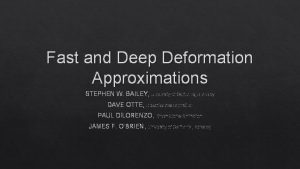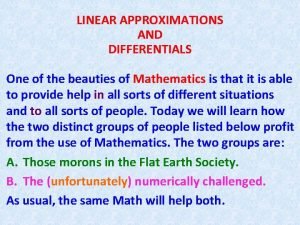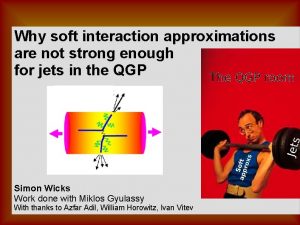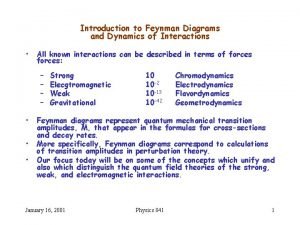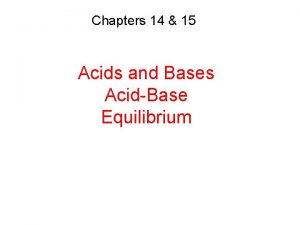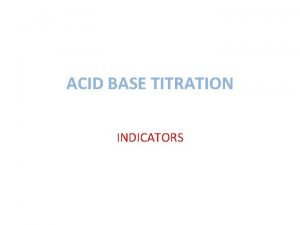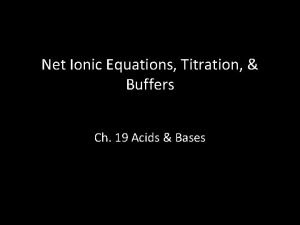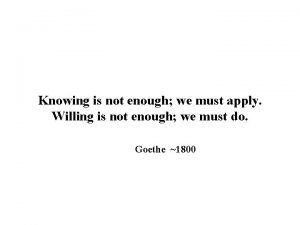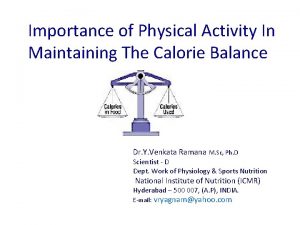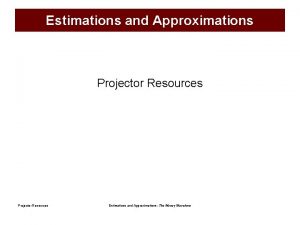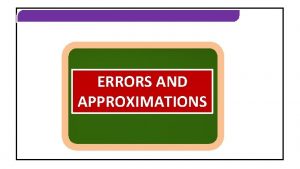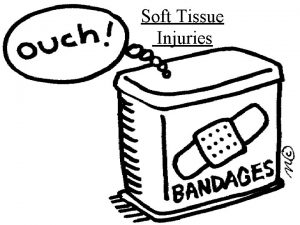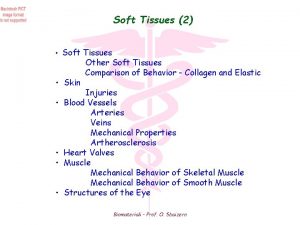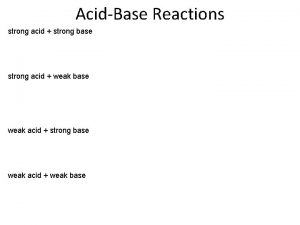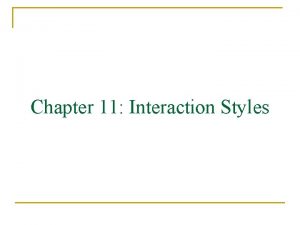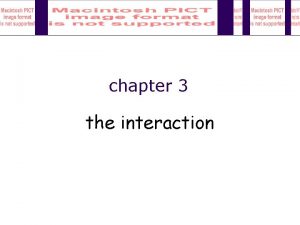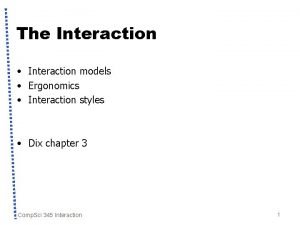Why soft interaction approximations are not strong enough




























- Slides: 28

Why soft interaction approximations are not strong enough for jets in the QGP Simon Wicks Work done with Miklos Gyulassy With thanks to Azfar Adil, William Horowitz, Ivan Vitev

Where are we – Rad vs Coll? Qin et al (Mc. Gill group + Mustafa) AMY radiative (>> GLV radiative) ar. Xiv: 0710. 0605 2 nd November 2007 Simon Wicks 2

Where are we - RAA(p. T) results? S. Wicks, M. Gyulassy (in preparation) 2 nd November 2007 Simon Wicks 3

Where are we - RAA(p. T) results? S. Wicks, M. Gyulassy (in preparation) 2 nd November 2007 Simon Wicks 4

Question: Can perturbative processes explain both the pion and electron high p. T data? What are the uncertainties in our models? What do the parameters that we extract from the 'fitting' actually mean? 2 nd November 2007 Simon Wicks 5

Outline Why soft interaction approximations are not strong enough for jets in the QGP 1) What do I mean by 'soft'? 2) Concluding remarks 3) Introduction, the models etc 2 nd November 2007 Simon Wicks 6

Soft vs hard collisions Soft = soft relative to the medium Hard = hard relative to the medium Note: hard relative to the medium can still be soft relative to the jet! 2 nd November 2007 Simon Wicks 7

Conclusion Comparisons between energy loss models cannot be summarized in one parameter. 2 nd November 2007 Simon Wicks 8

Conclusion Comparisons between energy loss models cannot be summarized in one parameter. 2 nd November 2007 Simon Wicks 9

Conclusion Comparisons between energy loss models cannot be summarized in one parameter. 2 nd November 2007 Simon Wicks 10

Conclusion Comparisons between energy loss models cannot be summarized in one parameter. 2 nd November 2007 Simon Wicks 11

Why? 1) q hat is a local parameter 2 nd November 2007 Simon Wicks 12

Why? 2) The response of a jet to the medium is a DISTRIBUTION not a single parameter average 2 nd November 2007 Simon Wicks 13

Which distributions? 1) d. N/d(ΔE) => Important for collisional energy loss 2) d. N/dqperp => Important for radiative energy loss 2 nd November 2007 Simon Wicks 14

Some examples (radiative) 1) Use GW model, but assume in deep LPM regime where many, BDMPS many scatterings reduce (by central limit theorem) to Gaussian. hep-ph/9604327 2) Assume only very soft scatterings matter, make expansion of interaction for small q. T, use free parameter to fit. 3) Use full GW model including large q. T tails, but make a few implicit q. T small assumptions 4) Assume q. T << T is all that's important, use this assumption systematically throughout. 2 nd November 2007 Simon Wicks 15

BUT. . . 2 nd November 2007 Simon Wicks 16

BUT. . . 2 nd November 2007 Simon Wicks 17

The model Simple model: t-channel on-shell 2 ->2 scattering Evaluate the distribution for one collision, convolute for multiple collisions. Take several approximations, look at the effect on the resulting distributions 2 nd November 2007 Simon Wicks 18

Models Note: C_ab's can be related to the imaginary part of the (medium modified) propagator. Note: the full dk integrals can be done analytically => polylogs 2 nd November 2007 Simon Wicks 19

Coefficients ? 1) Strict HTL – neglect (omega, q)/(E or k) everywhere => 'HTL-S' 2) HTL e. Xtrapolation – include the extra terms in the coefficients 2 nd November 2007 Simon Wicks 20

'HTL-S' Delta E: Equivalent to Thoma-Gyulassy or t-channel or Braaten-Thoma qperp: similar to G-W model, with changes as found by Djordjevic (and Jeon, Moore) 2 nd November 2007 Simon Wicks 21

Models II For HTL e. Xtrapolation, what do we use as the propagators? HTL propagators? free space propagators? => 'HTL-X 1', 'HTL-X 2' 2 nd November 2007 Simon Wicks 22

Multiple collisions Convolution of single collision distribution We are far away from the approach to the central limit theorem 2 nd November 2007 Simon Wicks 23

Results: averages HTL-S GW HTL-S HTL-X 1, X 2 (Note: the RAA calc at the beginning used HTL-X 1 for collisional) 2 nd November 2007 Simon Wicks 24

Results: distributions q. T HTL-S GW HTL-X 1, X 2 2 nd November 2007 Simon Wicks 25

Results: distributions ΔE HTL-S HTL-X 1, X 2 2 nd November 2007 Simon Wicks 26

So what? Can't we just scale all our results by a constant factor? 2 nd November 2007 Simon Wicks 27

Conclusion The details of the distributions will affect: mass dependence energy dependence of our results. Must take into account recoil! Do not (only) make soft interaction approximations. The rarer, harder interactions are at least comparable in importance in our considerations of jet energy loss. There are many aspects to consider to reconcile the different energy loss models. 2 nd November 2007 Simon Wicks 28
 Antigentest åre
Antigentest åre How much vs how many
How much vs how many Ephesians 6:10-20 nkjv
Ephesians 6:10-20 nkjv Our failing schools enough is enough summary
Our failing schools enough is enough summary Im good enough i'm smart enough
Im good enough i'm smart enough Our failing schools enough is enough summary
Our failing schools enough is enough summary Stephen w bailey
Stephen w bailey Linear approximations and differentials
Linear approximations and differentials Pictures
Pictures Why i am not strong
Why i am not strong Strong interaction feynman diagram
Strong interaction feynman diagram Introduction to feynman diagrams
Introduction to feynman diagrams Weak base strong acid titration curve
Weak base strong acid titration curve Strong acid weak base titration graph
Strong acid weak base titration graph How to remember strong acids and strong bases
How to remember strong acids and strong bases Strong acid weak base titration
Strong acid weak base titration What are strong bases
What are strong bases Titration ionic equation
Titration ionic equation 16 andrex toilet rolls
16 andrex toilet rolls Security is always too much until the day it is not enough
Security is always too much until the day it is not enough Learning is not enough we must apply
Learning is not enough we must apply Not enough nelsons.com
Not enough nelsons.com Not enough grammar
Not enough grammar Why exercise enough weight
Why exercise enough weight Vocab level d unit 3
Vocab level d unit 3 Does this table represent a function why or why not
Does this table represent a function why or why not What does a table represent
What does a table represent Why or why not
Why or why not Don't ask why why why
Don't ask why why why






